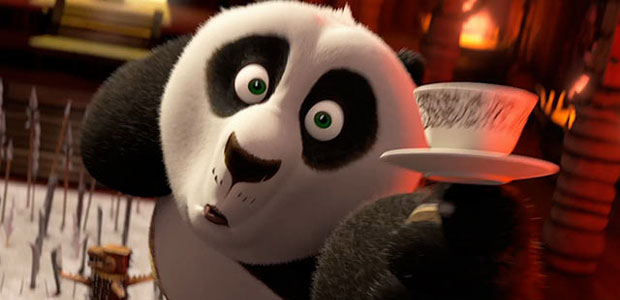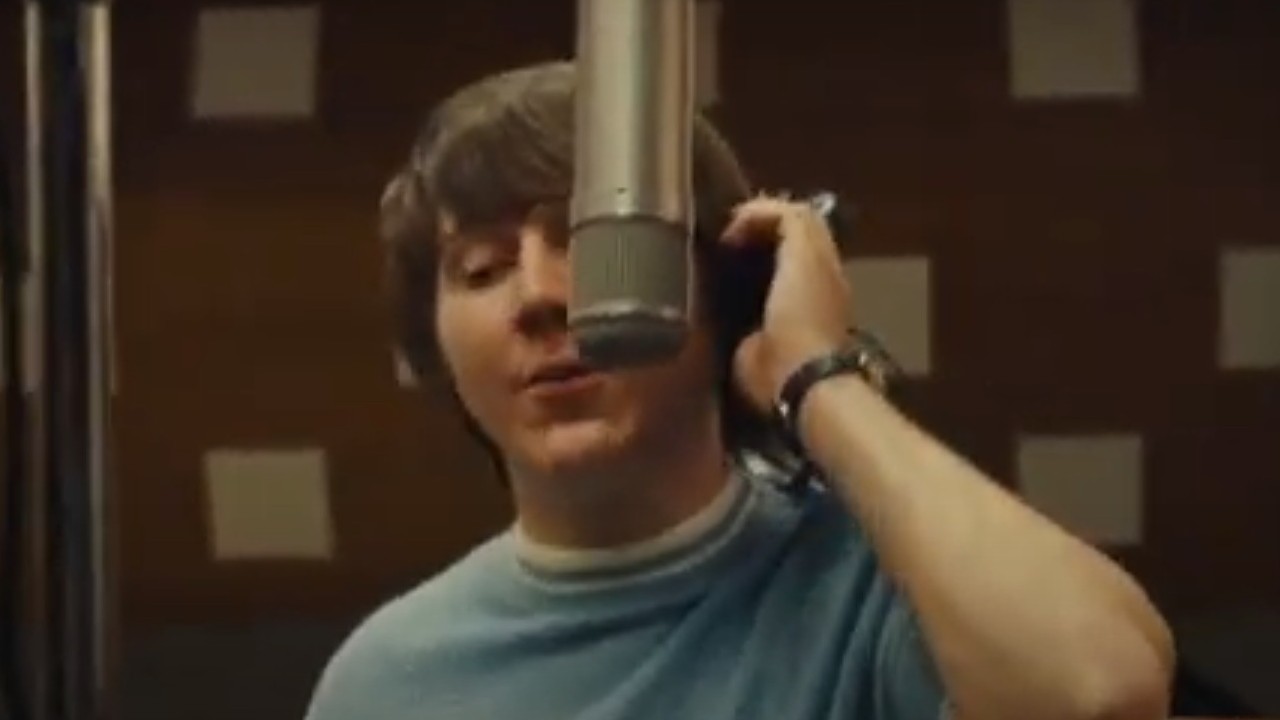The Kung Fu Panda franchise feels like an anomaly. On the surface, it probably shouldn’t work – mixing classic Kung Fu-style stories with silly animal characters, childish humor and sophomoric jokes – and yet the two previous movies released by DreamWorks Animation have been two of the best features the studio has made. Now directors Jennifer Yuh Nelson and Alessandro Carloni’s Kung Fu Panda 3 is here to close out the trilogy, and while the second sequel isn’t completely on the level of its predecessors, it is still a vividly entertaining adventure story with beautiful animation and a solid way to continue the arc of the titular protagonist.
Once again based on a script by the duo Jonathan Aibel and Glenn Berger, Kung Fu Panda 3 picks up shortly after the events of the last film, and finds Po (voiced by Jack Black) ascending to the next level of his training: the move from student to teacher. Master Shifu (Dustin Hoffman) wants to retire so that he can commit himself to the study of qi, and the silly panda also known as the Dragon Warrior is to be made the new trainer of the legendary Furious Five (Angelina Jolie, Jackie Chan, Seth Rogen, Lucy Liu, and David Cross). Obviously this is a tremendously high-pressure situation already, so it doesn’t help that the move coincides with both the return of Po’s long lost father, Li (Bryan Cranston), and the return of a villainous Kung Fu master bull named Kai, who has returned from the spirit realm to try and capture the qi of every warrior in the world.
The sequel most certainly takes a “if it ain’t broke, don’t fix it” approach to the franchise formula, creating modern stories steeped in Chinese mythology while also expanding on Po’s journey and destiny to become the greatest warrior the world has ever seen… and it really works just as a result of this. In the last seven years, audiences have become invested in seeing the oafish, gluttonous eponymous panda overcome personal hardship and challenges to live up to his real destiny, and Kung Fu Panda 3 keeps that really going on a personal and professional level for the character, as he must both struggle against the greatest enemy he’s ever faced while simultaneously be torn between his biological father and the goose (James Hong) who raised him. It’s not overly complex storytelling, but it is emotional, affecting, and ultimately engaging on the right level to be seen as a (potentially) great capper for the franchise.
Kung Fu Panda 3 makes a lot of strides in the further development of Po as a character and a protagonist, but there is a significant downside that comes as a result – specifically a lackluster use of the fantastic ensemble that has helped perpetuate the series over all these years and has provided some of the three movies’ best moments. The members of the Furious Five are all represented and do technically play a significant role in the movie. But while the previous installments benefitted heavily from the chemistry between Po and the group as they faced down evil, a big part of that is definitely lost as Po goes on a journey of self-discovery and attempts to learn who he really is as a panda. Engaging and entertaining as the plot of the film is, it’s also distracting just how little advancement is done with Tigress, Monkey, Mantis, Viper and Crane, despite the massively important roles they had in the last two films.
Supporting character development is obviously one of the big flaws with Kung Fu Panda 3 - particularly disappointing given the series’ legacy – but what has held strong is the impressive visual style of the franchise – which has only gotten better and more beautiful over time. Director Jennifer Yuh made some amazing moves with the aesthetic of the series with Kung Fu Panda 2, particularly with the introduction of some stunning 2D animation sequences, and its direct sequel is a fitting follow-up with other great new ideas of its sleeve – mostly thanks to the presence of the movie’s central villain. We first meet Kai as he is doing battle with the returning Master Oogway (Randall Duk Kim) in the spirit realm, and this world alone offers incredible physics-free environments for intense and beautiful fight sequences where anything can happen. Kai also has the ability to use stolen qi to create jade minions of the various heroes that he has defeated over the years, and the physical texture of these characters alone is jaw-droppingly beautiful, even before they begin executing incredible and stunning choreography during battle. Paired with the movie’s impressive use of 3D, it legitimately sets up a visual feast.
Kung Fu Panda 3 is the weakest feature installment of the series overall, but that ultimately says more about the quality of the Kung Fu Panda franchise than the failings of its most recent chapter. Fans may be less blown away by the story and character development, but will get a full feast of visual splendor and Kung Fu goodness.

Eric Eisenberg is the Assistant Managing Editor at CinemaBlend. After graduating Boston University and earning a bachelor’s degree in journalism, he took a part-time job as a staff writer for CinemaBlend, and after six months was offered the opportunity to move to Los Angeles and take on a newly created West Coast Editor position. Over a decade later, he's continuing to advance his interests and expertise. In addition to conducting filmmaker interviews and contributing to the news and feature content of the site, Eric also oversees the Movie Reviews section, writes the the weekend box office report (published Sundays), and is the site's resident Stephen King expert. He has two King-related columns.

